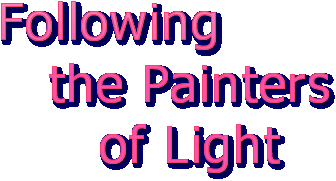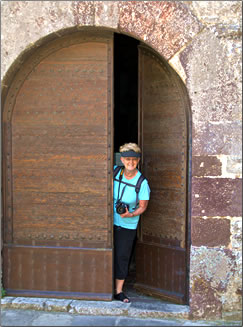

Mont Sainte-Victoire was a passion for both Cézanne and Picasso – one painted it, the other bought it!

by Julie H. Ferguson
Images ©Julie H. Ferguson 2011 except where noted.
The light in Provence, France, is rich and golden. It has attracted artists and photographers for centuries. I’m entranced by this ever-changing light on Mont Sainte-Victoire from the terrace of a house close to Aix en Provence and yearn to see it through the eyes of two world-renowned artists. Paul Cézanne and Pablo Picasso shared une grande passion for the mountain – one painted it and one bought it!
Mont Sainte-Victoire, a huge limestone mesa, dominates my view tonight. I can see the Croix de Provence atop the western peak and the paragliders swooping like flies around it on calm evenings.
I begin my drive at Le Tholonet, the tiny village at the foot of Mont Sainte-Victoire that obsessed Cézanne, the favorite son of the Aixois. In the late 1800s, he regularly made the journey by horse-driven coach from his studio in Aix, a bone-breaking ride on a steep, winding track. The windmill, another subject he loved, still stands. Today, it is a tiny art gallery and the resident artist leads me to the spot where Cézanne first painted the mountain. He completed 87 paintings of Mont Sainte-Victoire in his lifetime.

Cézanne loved the still-existing stone windmill that is appropriately an art gallery today.
Paul Cézanne was born (1839) and died (1906) in his beloved Aix-en-Province only a few kilometers from Mont Sainte-Victoire. He remarked, “When one is born there, he is ruined, nothing else means anything to you.” He is acknowledged as the artistic bridge between late 19th century Impressionism in art and the Post Impressionistic directions of the early 20th century including Cubism. At his studio, now the Cezanne Studio Museum in Aix-en-Provence, the painter’s human and everyday simplicity still live on. It is well worth a visit.
The Berne restaurant that Cézanne frequented is closed in the morning, but the owner lets me in to see the artist’s corner table. With chairs stacked and not one painting on the walls, it’s unremarkable, but the renamed Relais Cézanne (right) transforms into an elegant restaurant each evening.

Soon I’m heading east again along Route Cézanne (D17), which follows the mountain’s southern flank. The narrow road has no shoulders – I’m amused that the posted limit is 90 kilometers per hour when I can’t do 45. As I climb, drifts of blue cornflowers in the fields are overtaken by small oaks and later by scrubby vegetation dotted with umbrella pines.

Higher still and the mountain towers above me, its vertical ridges in sharp relief in the sun and the Croix de Provence silhouetted against the sky. The flat valley below is carpeted with vineyards and olive groves as the morning mist disperses. Along this section (right), rust-red trails lead hikers and climbers to the high ramparts of Mont Sainte-Victoire where there is a chapel close to La Croix. I know there is a footpath offering an easy though long climb, but I fail to find it.
I zip down through the vineyards, admiring the fat purple grapes almost ready for harvest, to wine-producing villages that glow apricot in the sun. Every turn on Route Cézanne reveals a tempting view for painters and photographers.
The Mont Sainte-Victoire route is a favorite area for recreational cycling, so I find myself driving among hundreds of cyclists. The French of all ages are fanatical about this sport (think Tour de France), and seem to like doing it in groups. They own the road! The routes are challenging for both cars and cyclists – mountainous with switchbacks.
At Pourrières I turn north, and the road narrows and climbs. After a final switchback, I reach 631 metres, the highest I’ll get, at Col des Portes. As I head west along the north side of Mont Sainte-Victoire, oak forests obscure the views. I’ve come nearly full circle for a date with Pablo Picasso, who revered Cézanne as his artistic father.
Vauvenargues is strung out along a gorge like washing on a line. Across from the village is a small château perched on a rock among the trees. Red shuttered windows dot the faded ochre walls inside its rampart.

Vauvenargues village, the location of Picasso’s chateau, lies on a forested slope looking south to Mont Sainte-Victoire.
In 1958 Pablo Picasso bought Château de Vauvenargues and 1,012 hectares of land that extend to La Croix. He said with glee, “Cézanne painted these hills and now they are mine.” Picasso lived here until ill-health forced his return to the Riviera in 1961. Afterwards he rarely visited and his beloved château suffered neglect. Picasso’s step-daughter, Catherine Hutin, owns it today inheriting from her mother, Jacqueline. It took her until 2009 to open the château to the public.
I’m eager to see Picasso’s château dating back to 1297, but in 2011 the website was unclear about tours. A woman tucked behind its open wrought-iron gate says, “Oui, it’s open but you need a reservation to do the tour.”
I don’t have one, but after some negotiation I am allowed in for the guided tour and the exhibition of Picasso’s little-known etchings. I am cautioned that no photography is allowed inside or outside. Eighteen tourists join me but there’s no translation of the commentary or guidebook for non-French-speaking art aficionados.

Originally built in 1297, Picasso’s chateau is open to the public seasonally though it is in poor condition and offers a limited appreciation of the artist’s larger-than-life presence there during the final chapter of his life.
When Picasso moved in, he left many of the main rooms as he found them, including a formal dining room with a small chapel at one end, but he filled the terrace with his sculptures. Inside, the château smells damp. It’s austere and not as big as I expected; nonetheless Picasso, his second wife Jacqueline, and their Afghan hounds must have rattled around in it. The family quarters on the sunny side are plain and sparsely furnished. I imagine the Matisses that Picasso hung but no longer grace the walls. The noonday light exposes unhealed ravages of time – crumbling plaster and peeling paint. A few of Picasso’s sculptures stand in the hall and family dining room.
None of his paintings are here though dozens of his etchings are exhibited. A few I like, especially those of bullfights and circuses, and many I don’t, but I appreciate his remarkable gift. Although he did three of Vauvenargues, he never painted his château or Mont Sainte-Victoire. “I want to leave the mountain to the genius of Cézanne,” Picasso said.

During their 20 years together, Jacqueline, Picasso’s second wife, modeled for more than 400 of his paintings. He was 79 when they married in 1961. ©Ombrelle (Creative Commons)
I discover little of Picasso’s spirit in the château which he and Jacqueline only occupied for four years. An exception is his bathroom’s high-spirited mural of a forest faun playing a flute, which he painted for his wife. However, the last room on the tour speaks volumes about the man. This is his studio, originally le grand salon. Here he worked feverishly under ornately carved crown mouldings and beside a Baroque-style mantelpiece that soars 20 feet to the ceiling. The studio is filled with Picasso’s over-sized easels, pots of paints on the refectory table that he used as a huge palette, and his brushes. Even his paint splatters still spot the tiled floor.

The author visited a small, fortified church typical of this part of Provence. ©James S. Ferguson
As the tour ends, I gaze down at Picasso’s statue La Dame à l’offrande, sculpted in 1933, atop a grassy mound. His body is interred beneath it. When Picasso’s widow received permission in 1973 to bury him on private land, she placed the statue, which meant the world to him, on top of the grave. Jacqueline despaired over Picasso’s death and 13 years later took her own life. She lies beside him. I’m mildly disappointed with my visit to Picasso’s Château de Vauvenargues. I had hoped for more – some paintings, the opportunity to take photographs, an English-speaking guide, and a château in better condition. However, I relish the fact that I have walked in the footsteps of the greatest legend of modern art.
Tonight, sipping vin rosé, I savour the sunset’s light on Picasso’s and Cézanne’s Mont Sainte-Victoire with the satisfaction of knowing these “Painters of Light” a little more intimately than I did the day before.

Cycling is another popular but challenging way to explore the Mont Sainte-Victoire area. Courtesy of VéloSport Vacations

Typical Provence countryside.
Julie H. Ferguson is an addicted traveller, a photographer, and the author of 24 books, four of which are about Canadian history and nine are photo portfolios. Julie never leaves home without her cameras and voice recorder, always looking for the color and sounds that captivate readers everywhere. Julie’s websites are www.beaconlit.com and www.stampsinmypassport.blogspot.com.
